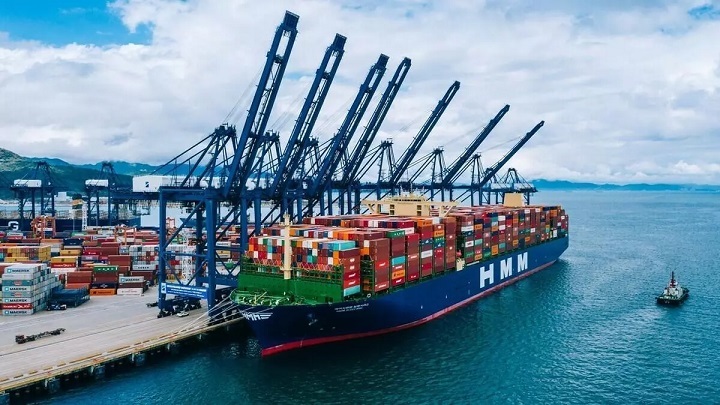Price storms sweep through Vietnamese businesses

According to Vietnamese businesses, the Covid-19 epidemic has made it difficult for them to maintain production and ensure on-time delivery. The higher transportation cost is “another hit”.
Cao Nguyen Binh Phuoc Co., Ltd specializes in producing coal pellets and compressed rods for export to the US and West Asia. In June 2020, the company paid US$4,500 for each 40-foot container to the US and $1,100 to Saudi Arabia. In November 2020, the charges doubled and have continued to increase sharply in 2021. Currently, it has to pay up to $13,800 for a 40-foot container exported to the US and $5,800 to Saudi Arabia.
The company’s manager Nguyen Thi Cam Hang said that the freight rates not only have sharply increased but sometimes businesses could not hire a ship, even though they were ready to pay shipping rates three times higher than last year. If this situation continues, it will be difficult for Vietnamese exporters because customers will choose a closer market.
This is the common situation of Vietnamese exporters at present. Cargo shipping charges are rising to the highest level in history and keep increasing. It is forecast that freight will be up to $20,000 for a 40-foot container to Europe. This greatly affects the export of Vietnamese agricultural products when export goods are of low value, while freight is high and the selling price cannot increase accordingly.
Many companies are considering whether they should keep exporting goods. If going forward, there is no profit, even losses. If they stop, they will lose their market.
Exports hit hard by higher charges and fees

According to the Vietnam Logistics Association, exporters are suffering from the weekly-increasing freight rates. For 40-foot refrigerated containers shipped to the US, the freight rose from about $7,500 in April 2021 to $20,000 at present. Container freight from Vietnam to some seaports in Russia has increased to $5,000-6,000.
In addition, each shipping line imposes three to five types of surcharges such as loading and unloading fees at the port, container cleaning, documents, lead clamps… These surcharges are set by shipping lines themselves without having an agreement with clients.
According to the Vietnam Maritime Administration, as the domestic fleet is not capable of exploiting freight routes to Europe and North America, the entire market share is dominated by foreign shipping lines. Currently, 38 foreign shipping lines hold 95% of Vietnam’s import and export freight transport market.
At a recent dialogue with shipping lines, many businesses were upset about shipping lines raising charges too much and too quickly. Information about freight rates is unclear and other problems. Shipping lines only said that the prices follow market mechanisms and are regulated by supply and demand. This explanation made businesses even more frustrated.
The Vietnam Logistics Association also said that there is a big difference in prices between shipping lines. For a 40-foot container going to New York, the freight rate is $8,500 or more than $10,000 for different shipping lines. The Premium package costs up to $14,000 and Diamond package costs up to nearly $20,000.
The price of oil has not increased and the export demand has not increased, so why is the freight rate so high? Why is there a big difference between shipping lines and packages? Besides, carriers collect surcharges, and apply the USD exchange rate of their own, not based on the rate of the State Bank of Vietnam.
According to businesses, the Covid-19 epidemic has made it difficult for them to maintain production and ensure on-time delivery. The higher transportation cost is “another hit”.
Meanwhile, the financial statements of major shipping lines in the world in the first quarter of 2021 showed that revenue and profit both increased enormously. Specifically, by the end of the first quarter of 2021, Cosco’s revenue increased by 80%, equivalent to $9.87 billion, and profit up by 26 times over the same period last year, reaching $2.71 billion. Maersk’s revenue was $12.4 billion and net profit was $3.1 billion. Evergreen’s revenue increased by 35%, estimated at $2.27 billion, net profit of $567.13 million.
Source/Credit: https://m.vietnamnet.vn/en/feature/price-storms-sweep-through-vietnamese-businesses-769672.html

